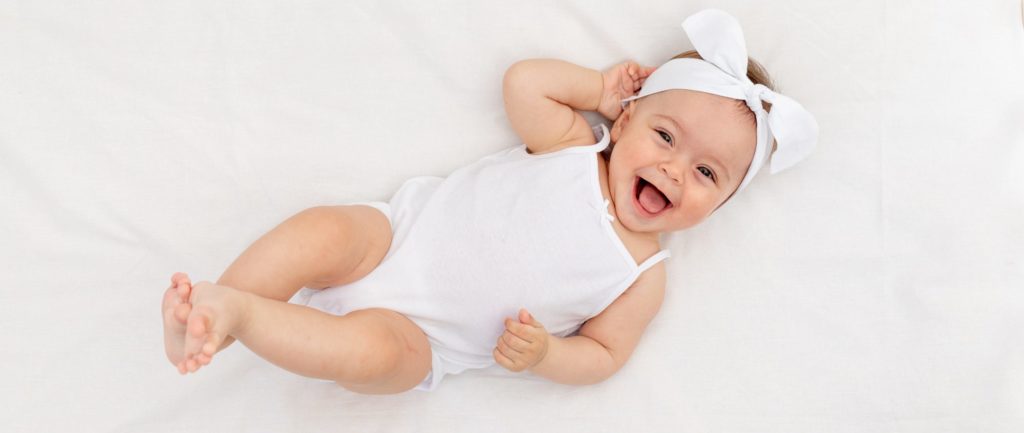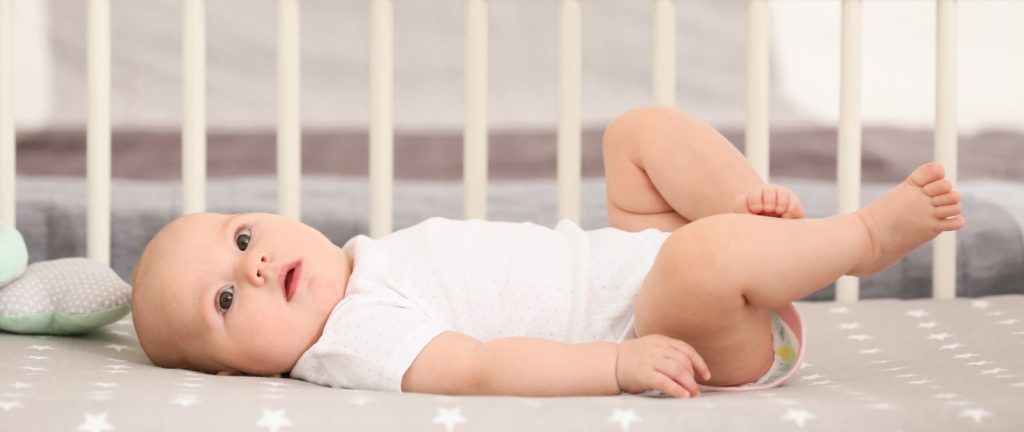In addition to wondering if they should sleep train or when their baby will sleep through the night, parents are often concerned with how they can best keep their baby safe and avoid injury. One essential way to promote infant safety is by creating a safe sleeping environment. Research shows that over half of parents use bedding, such as blankets, in an unsafe way when putting their infant to sleep.
Sleeping with a loose blanket is unsafe for babies during the first year of life, according to the American Academy of Pediatrics. Sleeping with a loose blanket or other soft objects, such as sheets, quilts, or soft toys, increases a baby’s risk of experiencing injury or death. For example, bedding and soft objects in an infant’s sleep area are associated with sudden infant death syndrome (SIDS), suffocation, and strangulation. Also, babies should not fall asleep anywhere else where there are soft or loose objects like blankets and pillows, such as an adult’s bed.
Key Takeaways
- Babies should not sleep with blankets before their first year due to suffocation risks.
- Swaddling, in which a baby is wrapped tightly in a blanket, does not increase the risk of SIDS when done correctly.
- Cribs should have a firm mattress and no loose bedding to ensure a safe sleep environment.
- Increasing room temperature or putting the infant in warmer sleep clothes can help them stay warm through the night without a blanket.
When Can a Baby Sleep With a Blanket?
The American Academy of Pediatrics (AAP) recommends that babies do not sleep with loose blankets above or below them during their first year of life in order to prevent injury and death. Additionally, babies should not sleep with any soft bedding, including pillows, loose sheets, comforters, quilts, stuffed animals, or crib bumpers.
The American Academy of Pediatrics does not name a specific age when it becomes safe for a child to sleep with loose blankets. When a baby turns 1 year old and becomes a toddler, it is up to their parents to determine if they are ready to sleep with a blanket. Uncertain parents should turn to their pediatrician, who can advise if a toddler is ready for a blanket.
Is it Safer to Swaddle Babies for Sleep?
The American Academy of Pediatrics notes that research does not suggest swaddling, a practice in which a baby is wrapped tightly in a blanket, increases the risk of SIDS when done correctly.
However, if done incorrectly, swaddling has been associated with an increased risk of SIDS, particularly in babies who can roll over. Also, a swaddle may cause other adverse outcomes if not prepared properly, such as an increased breathing rate, reduced lung capacity, hip problems, strangulation, or overheating.
That said, the American Academy of Pediatrics allows that swaddling may be safe for infants who cannot yet roll over, so long as the swaddle is correctly prepared. The snugness of a swaddle may feel soothing to infants and even encourage sleep. A baby should always be placed on their back while swaddled, and swaddling should stop as soon as the baby begins trying to roll over, which often begins at 2 months of age.
How to Keep Babies Warm Without Blankets
Parents might wonder how to keep babies warm during needed sleep without using a blanket. Other options exist. Parents can put their infant in a sleep sack or wearable blanket, clothing items specifically designed for babies to sleep in. However, like a swaddle, these items should be discontinued once the baby tries to roll over.
The baby’s bedroom temperature should also be kept a bit warm. Parents can make sure their baby is the right temperature by being aware of signs of overheating. If a baby is sweating, has damp hair, flushed cheeks, fast breathing, or has a heat rash, they should either have an item of clothing removed, the room temperature lowered, or both.
Shop the Best Crib MattressesSleep Safety Tips for Babies
Keeping blankets and other soft objects out of a baby’s sleep environment is just one way to keep a baby safe as they sleep. Also, follow these expert safety recommendations for baby sleep:
- Put a baby to sleep on their back for night sleep and all naps
- Put a baby to sleep on a firm surface, such as a crib or bassinet mattress
- Keep a baby’s crib or bassinet in your bedroom for at least the first 6 months and, ideally, the first year
- Move a baby that falls asleep in a car seat, swing, or stroller to a firm sleeping surface as soon as possible
- Avoid sharing a bed with your baby
- Do not lay a baby down on a couch or chair
- Do not allow a baby to fall asleep on a baby pillow or lounger
- Give the baby a pacifier before they sleep
References
Ask the Sleep Doctor
Have questions about sleep? Submit them here! We use your questions to help us decide topics for future articles, videos, and newsletters. We try to answer as many questions as possible. You can also send us an email. Please note, we cannot provide specific medical advice, and always recommend you contact your doctor for any medical matters.










